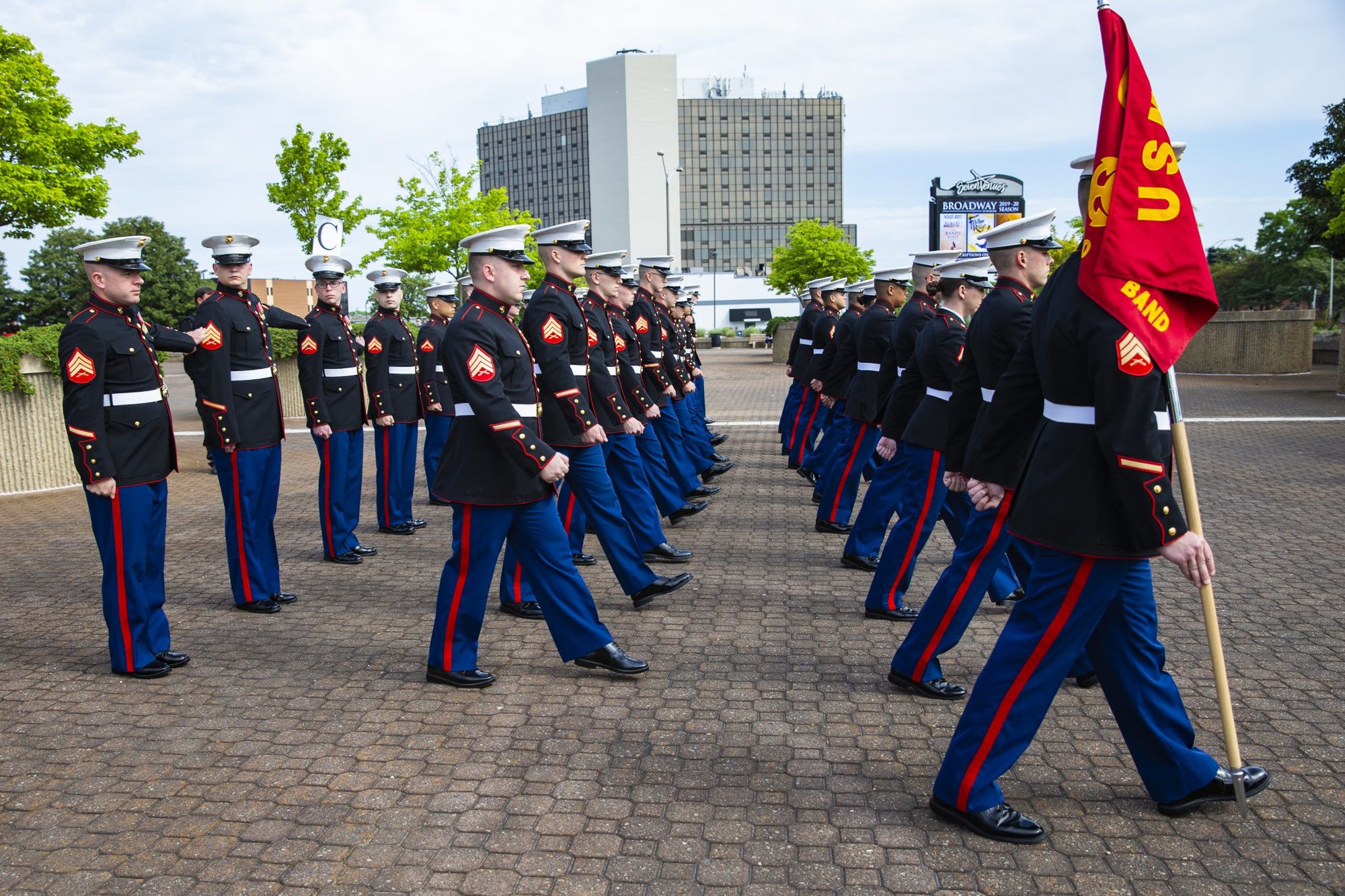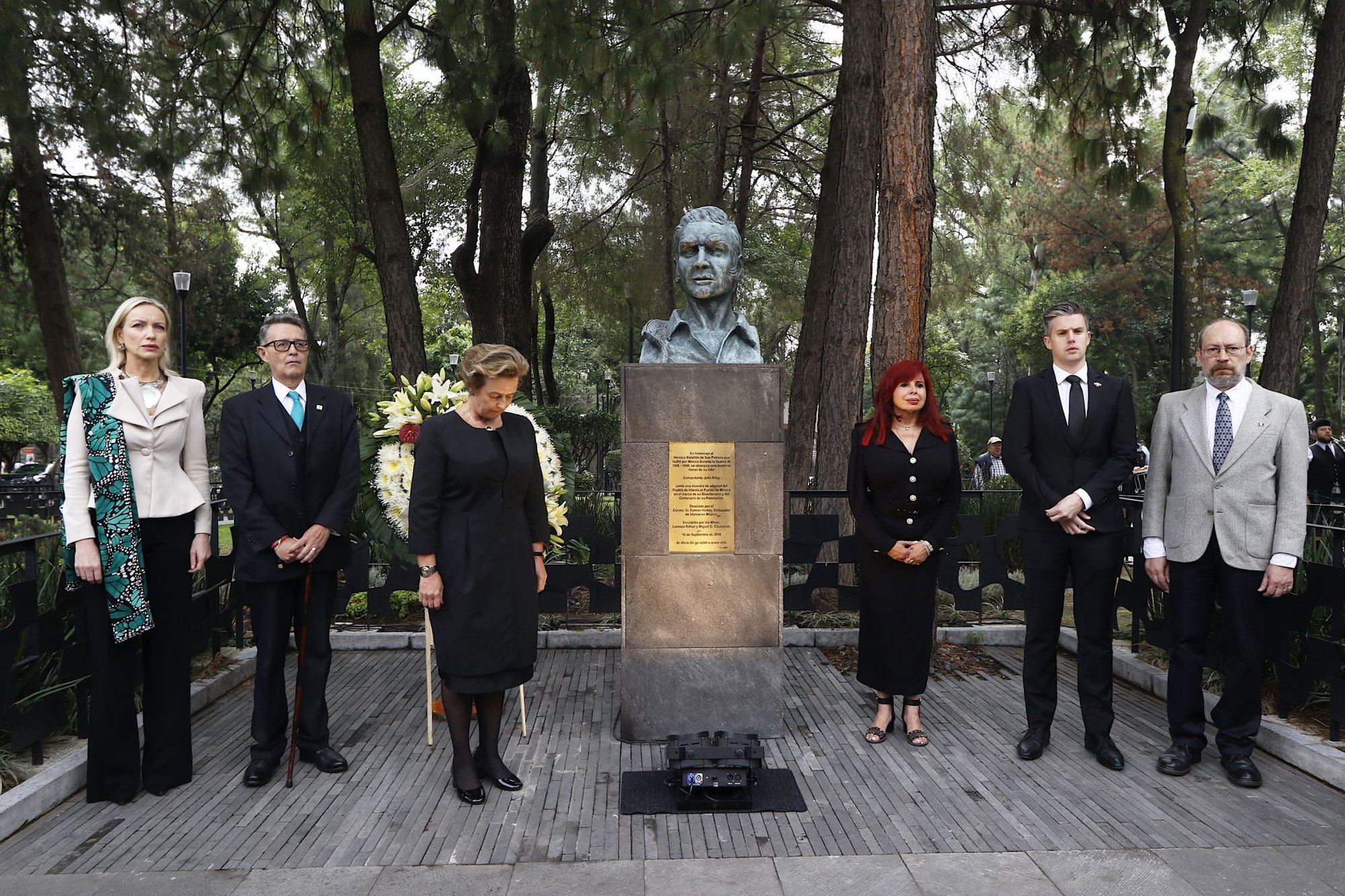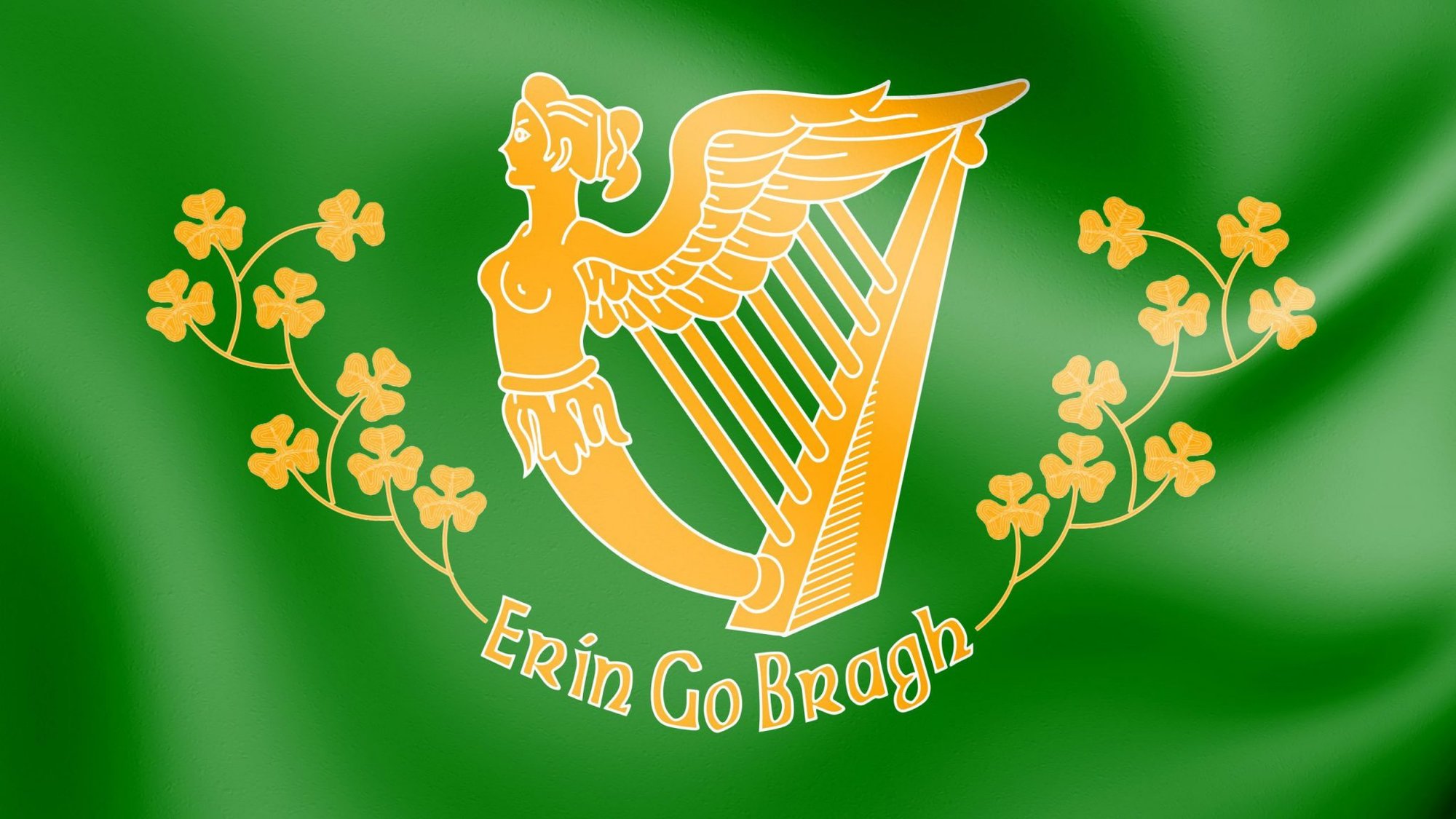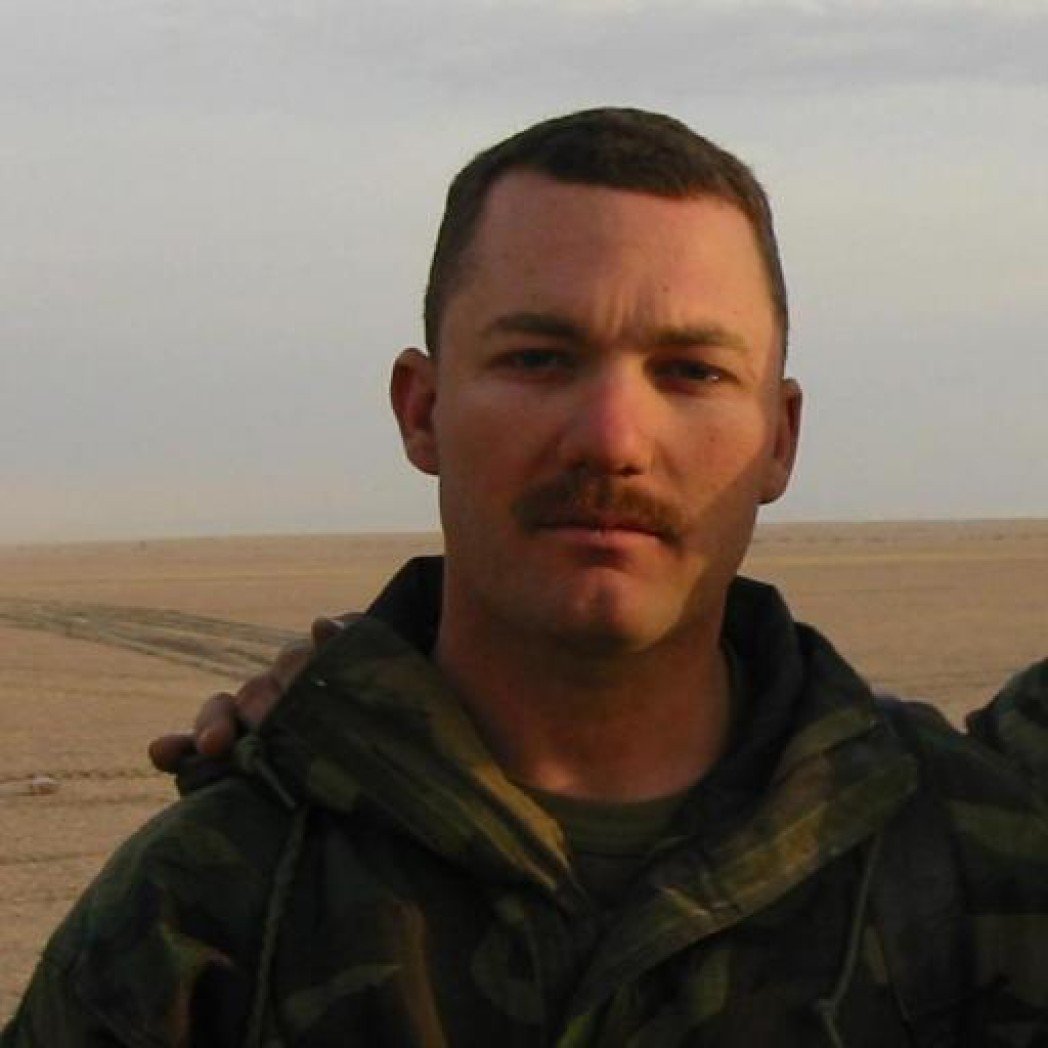Saint Patrick’s Battalion and the Dark History Behind the Marines’ Blood Stripe

A Marine receives his blood stripe during a ceremony at Marine Corps Air Station Yuma, Ariz. The blood stripe, worn on the trouser seam of Marine dress blues, honors the blood shed by officers and noncommissioned officers during the Battle of Chapultepec. US Marine Corps photo by Cpl. Sabrina Candiaflores.
As many Marines are aware, the lyric “From the Halls of Montezuma” in the opening line of the Marines’ Hymn is a reference to the battle for Chapultepec Castle during the Mexican War. The castle, which served as a military academy, was built on a 200-meter hill overlooking Mexico City, and the Americans had to take the well-fortified presidio before they could capture the Mexican capital.
On Sept. 13, 1847, US Marines and soldiers conquered the fortress after a vicious, uphill battle to the castle under withering gunfire and artillery. According to the Marine Corps, 90% of the Marine officers and NCOs who participated in the attack died during the assault, and the extraordinary bloodshed and sacrifice at Chapultepec is commemorated by the red “blood stripe” Marine noncommissioned officers, staff NCOs, and officers wear on their dress blue trousers.
What is less known among Marines is that as the Americans raised Old Glory over the castle at 9:30 that morning, 30 members of the Saint Patrick’s Battalion — many of them Irish Catholic soldiers who had deserted the American Army to fight for Mexico — swung from gallows a few miles away. The timing was intentional; the American colonel overseeing the execution wanted the flag the Irishmen had forsaken to be the last thing they saw. American newspapers described one of the largest mass executions in US history by saying the men were “launched into eternity.”

The Mexican War (1846-1848) was seen by many in the US as unjust from its inception. Its expeditionary nature — invading another country to acquire territory — made it just the second foreign conflict in US history. The Barbary Wars of the early 1800s — referenced in the “to the shores of Tripoli” line of the Marines’ Hymn — were the first. Then-congressman Abraham Lincoln said he believed the war was “unnecessarily and unconstitutionally commenced.”
In his memoirs, Gen. Ulysses S. Grant, a lieutenant at the time, wrote that he was “bitterly opposed” to the war and that it was “the most unjust [war] ever waged by a stronger against a weaker nation. It was an instance of a republic following the bad example of European monarchies, in not considering justice in their desire to acquire additional territory.”
But President James Polk wanted more slave states, and he believed, as many Americans did at the time, in manifest destiny — the idea the United States should extend from sea to shining sea. That meant acquiring all the territory from Texas to California, which meant invading Mexico.
In the mid-19th century, the majority of Americans were Protestant Christians, and anti-Catholic prejudice and discrimination was endemic in American society. Catholicism was seen as inherently incompatible with a democratic republic. Protestants reasoned that Catholics ultimately owed their allegiance to the pope in the Vatican, so they could never be trusted as fellow citizens.

During the Philadelphia Bible Riots of 1844, Americans attacked their fellow citizens for having a slightly different religion and talking with an Irish accent. At least four people died. The Pennsylvania militia had to be called up to quell the rioting.
Amid the backdrop of strong anti-Catholic sentiment in the US military, Mexican propaganda encouraged Catholic soldiers to desert, making powerful religious appeals and offering free land in Mexico and a pension for American deserters. Mexican military officer and President Antonio López de Santa Anna once made this appeal:
“Irishmen! […] If you are Catholic, the same as we, if you follow the doctrines of Our Saviour, why are you seen sword in hand murdering your brethren? […] Come over to us; you will be received under the laws of that truly Christian hospitality and good faith which Irish guests are entitled to expect and obtain from a Catholic nation… May Mexicans and Irishmen, united by the sacred tie of religion and benevolence, form only one people!”
Many US soldiers, primarily Irish Catholics, deserted the Army and fled to Mexico. John Riley, an Irish immigrant who had served as an artilleryman in the British army before enlisting as a US soldier, was one of them.
Riley deserted on the eve of the Mexican War, crossing the Rio Grande and joining the Mexican army. According to The Irish Post, Riley deserted “due to the discrimination against and mistreatment of Irish Catholics in the US Army, along with the widespread anti-Catholicism in the United States at that time.”
Uniting his fellow deserters, Riley formed Los San Patricios — the Saint Patrick’s Battalion — and created a cadre of crack artillery troops known as “flying artillery” for their nimbleness on the battlefield. Though the battalion included US deserters from several European countries, they fought under the traditional green, silk-harp-emblazoned banner of Ireland, with the addition of the Mexican coat of arms.

But Mexico lost almost every battle during the war. From Monterrey to Veracruz, and Churubusco to Chapultepec, the Americans outnumbered and outgunned the Mexicans. American atrocities against Mexican Catholic civilians probably increased the number of deserters in the American ranks. Out of the 40,000 US soldiers involved in the war, as many as 5,000 deserted.
In January 1847, US Gen. Winfield Scott told the secretary of war that American militiamen and volunteers committed atrocities in Mexico sufficient “to make Heaven weep, & every American, of Christian morals blush for his country.”
According to The Future of Freedom Foundation, newspapers in October 1846 reported that American volunteers had murdered “eight Mexicans, including two women,” and in Monterrey, “murder, robbery, and rape were committed in the broad light of day […] It is thought that 100 of the inhabitants were murdered in cold blood.”
At the Battle of Churubusco just outside of Mexico City on Aug. 20, 1847, members of the Saint Patrick’s Battalion acquitted themselves well in their last major fight. One American regiment “recoiled under the sweeping stroke of the artillery,” according to Frederick E. Goodrich. “The awful storm of lead and iron that poured down and across that causeway permitted no living thing to stand against it.”
When US Gen. David Twiggs’ forces took Churubusco, he demanded the Mexicans surrender their remaining ammunition. Mexican Gen. Pedro Anaya replied, “If I had any ammunition, you would not be here.”

Most members of the Saint Patrick’s Battalion who were captured at Churubusco hung when the Marines took Chapultepec Castle. John Riley was captured, but because he had deserted just before the war started, he was given 59 lashes and branded with a “D” on both of his cheeks, not executed. His back, according to an American officer who witnessed the lashing, “had the appearance of raw beef.”
The execution of the San Patricios, along with most history of the Mexican War, is largely unremembered north of the border — but the Marines who died there are honored in the Marines’ Hymn and immortalized with a bit of blood-red cloth.
Like the American Marines who fought at Chapultepec, the San Patricios who were executed believed their actions were right and just. And like the Marines immortalized by the blood stripe, they died for what they believed in. The Marines fought for their country and their brothers; the men of the Saint Patrick’s Battalion died for their faith.
Today, all American service members can practice and openly express the faith of their choosing. Catholics, Protestants, Muslims, Jews, Hindus, and countless other faiths are found in the ranks of the US military.
Thank God.
Read Next: Sláinte! Celebrating the Irish Brigade’s Contributions to America

J.E. McCollough served nine years in the Marine Corps. He fought in Iraq in 2003 and 2004 and is the recipient of a Purple Heart.
BRCC and Bad Moon Print Press team up for an exclusive, limited-edition T-shirt design!
BRCC partners with Team Room Design for an exclusive T-shirt release!
Thirty Seconds Out has partnered with BRCC for an exclusive shirt design invoking the God of Winter.
Lucas O'Hara of Grizzly Forge has teamed up with BRCC for a badass, exclusive Shirt Club T-shirt design featuring his most popular knife and tiomahawk.
Coffee or Die sits down with one of the graphic designers behind Black Rifle Coffee's signature look and vibe.
Biden will award the Medal of Honor to a Vietnam War Army helicopter pilot who risked his life to save a reconnaissance team from almost certain death.
Ever wonder how much Jack Mandaville would f*ck sh*t up if he went back in time? The American Revolution didn't even see him coming.
A nearly 200-year-old West Point time capsule that at first appeared to yield little more than dust contains hidden treasure, the US Military Academy said.












